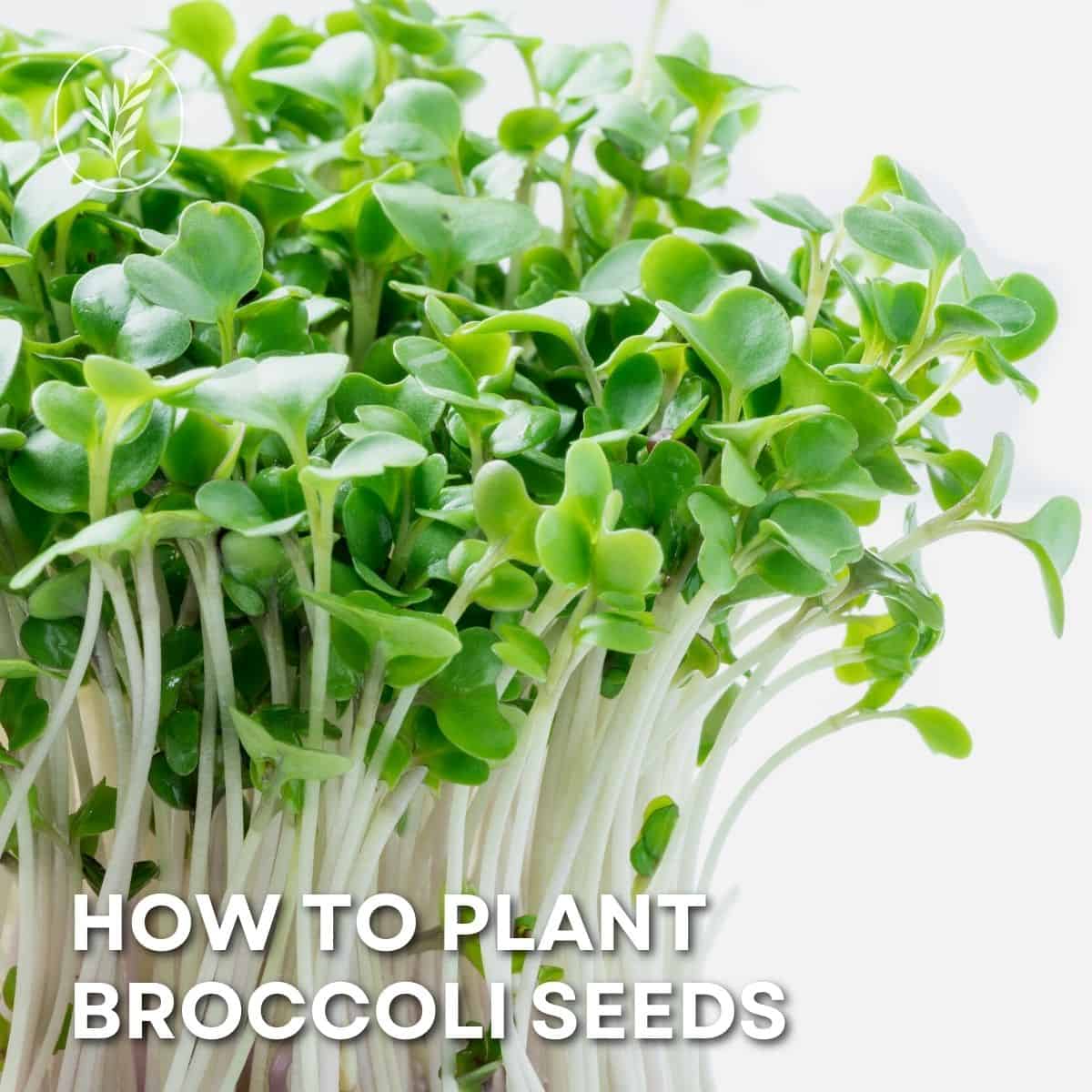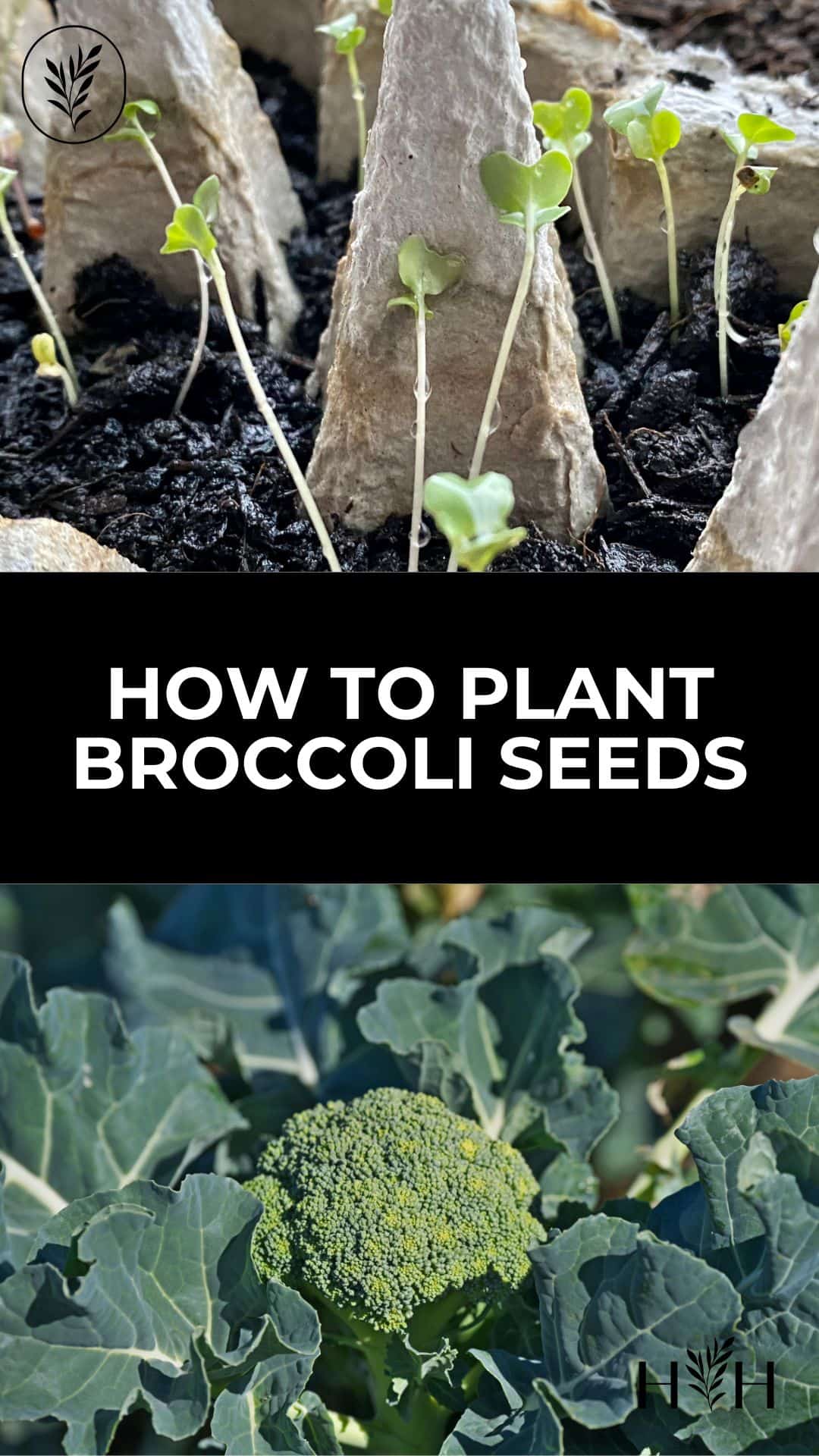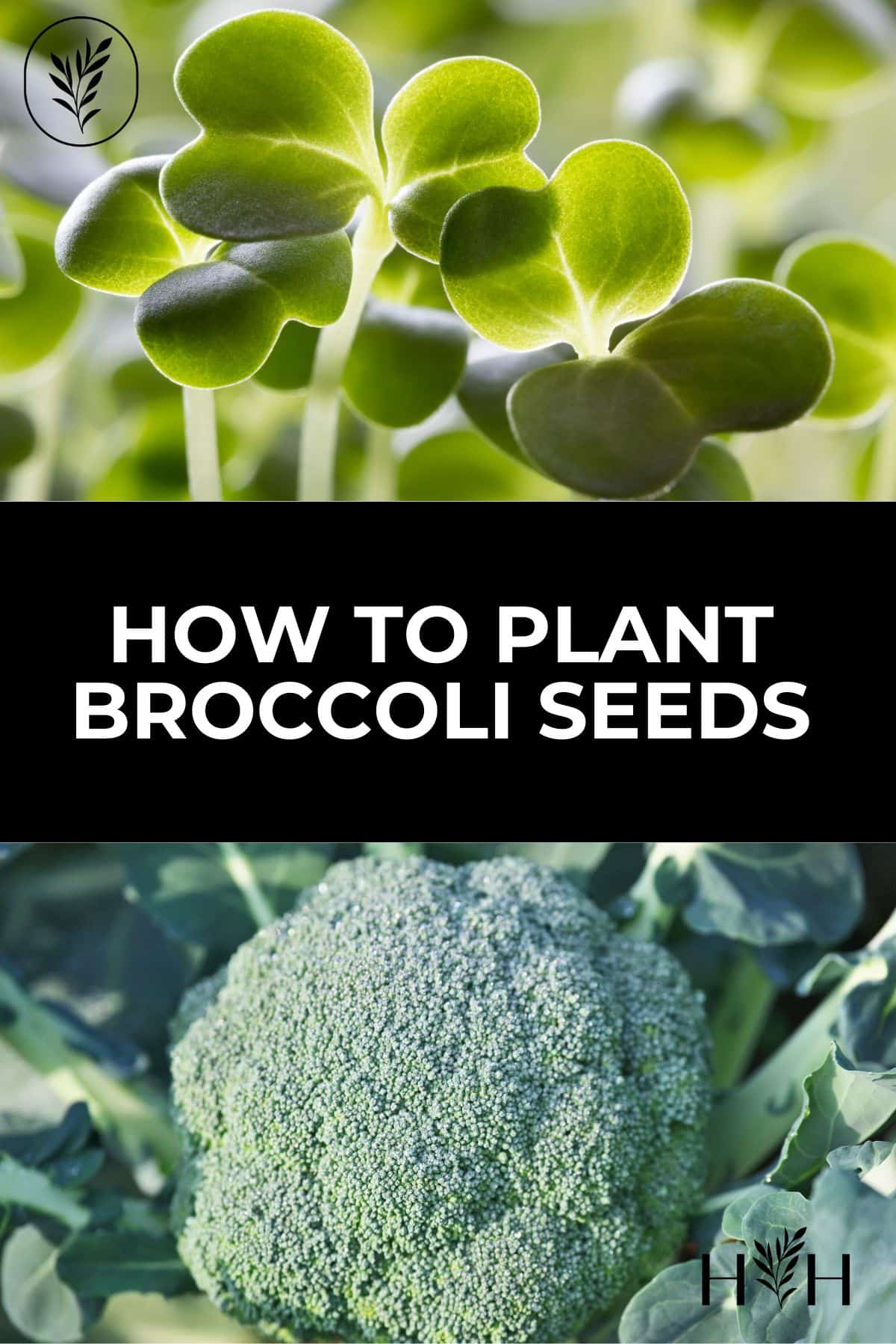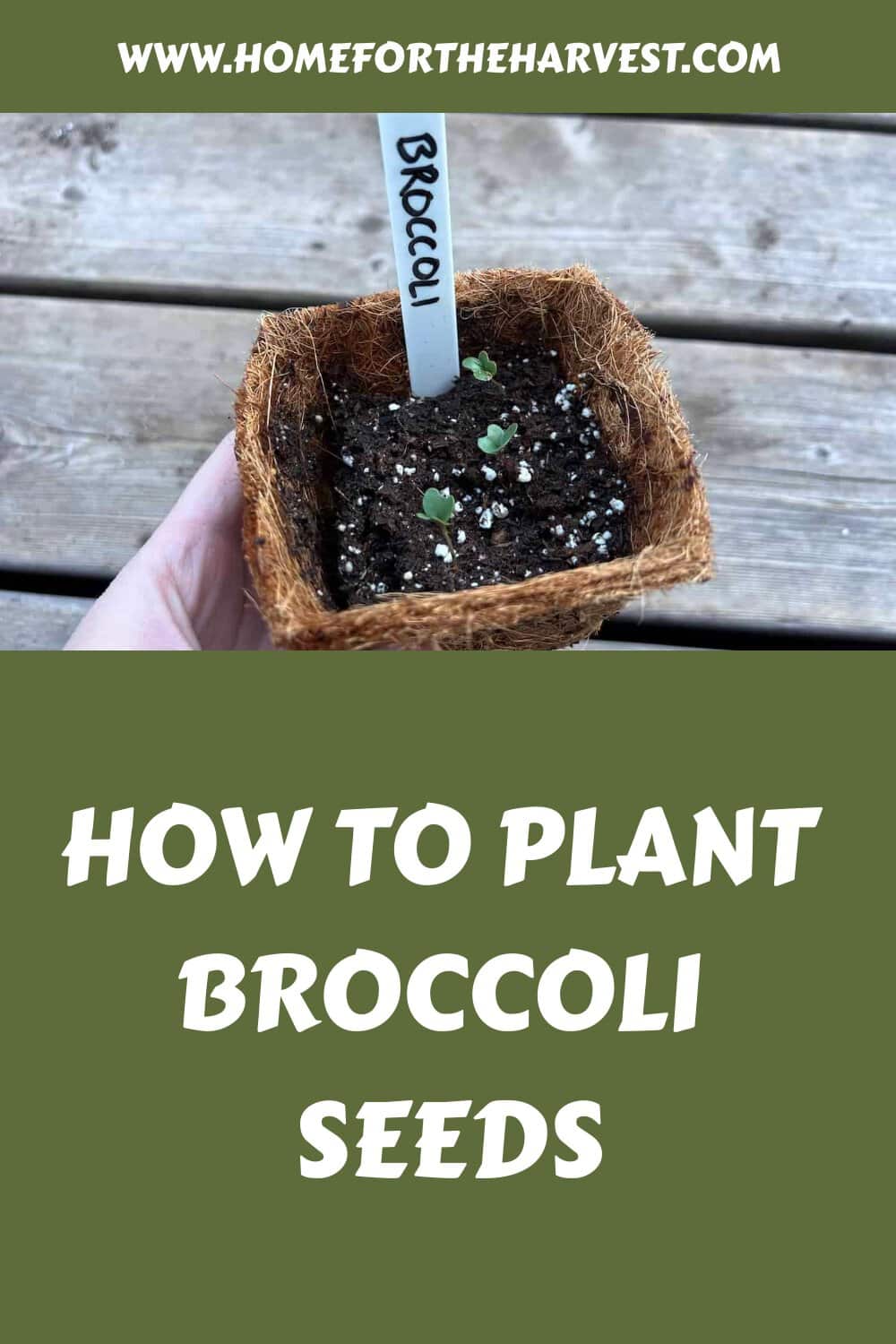Broccoli seeds are usually started indoors in potting mix, but can also be planted directly in the soil outdoors. Sow the seeds ¼” deep (5mm) and keep the soil moist. The seeds germinate most quickly at about 80°F (26°C), but can germinate at soil temperatures lower than 10°F (4°C) if planted outdoors. Broccoli seeds typically germinate in about a week in moist, room-temperature soil.
The basics of how to plant broccoli seeds
Growing broccoli is a simple process that can be done in either the spring or autumn season. To get started, you’ll need some basic supplies: seed packets, potting soil, containers or trays with drainage holes, and something to water the plants with.
Indoor planting is ideal if you want to give your plants a head start before transplanting them outdoors into the garden. Broccoli seedlings transplant well and you can more easily control plant spacing with transplants as opposed to direct seeding.
Broccoli seeds need to be started early enough that the plants have time to mature before hot weather arrives. Most varieties of broccoli take about 3 months to mature (from the transplant date), so broccoli seeds are usually planted in February-March.
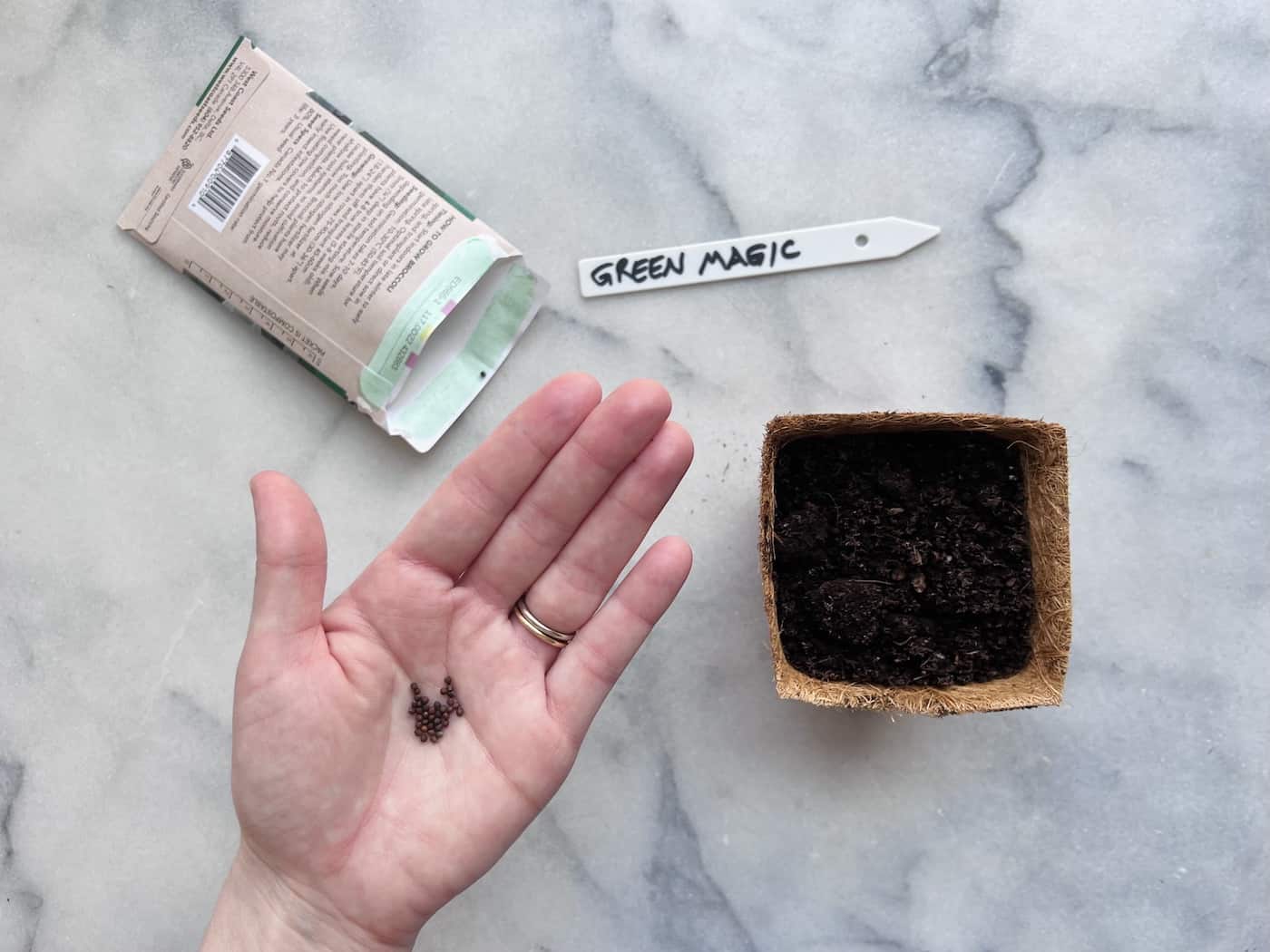
Start by filling containers or trays with potting soil and adding 2-3 seeds per container, burying them only about 1/4-inch deep into the soil. Place the trays in a bright spot with temperatures between 65°F – 80°F (18°C – 26°C) and keep the soil moist.
Watch for sprouts to appear. As the sprouts grow, trim off the weaker sprouts with scissors, leaving only the strongest seedlings. When it’s time to transplant outside, make sure each plant has at least four leaves before moving them out into their permanent home in your garden bed.
Choose a planting location in full sun. When planting directly into your outdoor beds or pots, dig small holes about 2 inches deep for each seedling. Water gently after planting until all of the dirt looks evenly dampened but not overly saturated.
Broccoli is a cool-season vegetable, meaning it prefers mild weather and does best during the shoulder seasons of spring and fall. The optimum growing temperature for maturing broccoli plants is 60-65°F (15-18°C).
Actively maintain the broccoli plants by regularly weeding around them, thinning out any overcrowded areas (not more than four to five per square foot), and fertilizing biweekly with a balanced vegetable fertilizer. Additionally, keep an eye on soil moisture levels – it should never be completely dry nor overly saturated/muddy.
How to plant broccoli seeds indoors for later transplanting
Planting broccoli seeds indoors for later transplanting is an excellent way to get a jump start on the growing season. It’s important to begin your seedlings in a warm, sunny spot, such as a south-facing window or grow light. To get started, you will need soil specifically formulated for starting seeds and peat pots or other biodegradable containers.
Begin by filling each container with the seed starting mix and lightly moistening it with water. Next, make small indentations in the top of each pot using your finger or a pencil before dropping two to three broccoli seeds into each one. Cover them up with more soil until they are just barely visible and then mist them gently with water from a spray bottle. Place the containers somewhere that gets at least six hours of sunlight per day and keep them evenly moist but not soggy throughout germination period which can take anywhere from five to ten days depending on temperature conditions.
Once your broccoli sprouts have emerged, thin out any overcrowded pots so that only one healthy plant remains in each container; this helps ensure plenty of room for root growth during its time indoors before being transplanted outside into the garden bed once all danger of frost has passed. When transplanting outdoors be sure to choose an area that receives full sun exposure (six hours per day) and work some compost into the soil prior to planting as this will help provide essential nutrients needed for optimal growth over time while also improving drainage capabilities if necessary
When caring for your newly planted broccoli plants, it is important to remember that they require consistent moisture levels throughout their growing season – especially when temperatures are high. Be sure to check daily and water deeply when needed; adding mulch around plants can also help retain moisture while suppressing weeds at the same time. Additionally, fertilize every few weeks according to package instructions as well as remove any yellowed leaves promptly so the remaining foliage stays strong and healthy over the course of the entire harvest period. With proper care, there should be no problem harvesting beautiful heads of fresh homegrown broccoli come summertime.
Indoors, it’s possible to get a jump on your garden by sowing broccoli seeds – ensuring robust plants for transplanting later. To ensure successful transplanting later, it is important to consider various factors when planting broccoli seeds outdoors.
How to plant broccoli seeds outdoors in the garden
Planting broccoli seeds outdoors in the garden is a great way to enjoy fresh, homegrown vegetables. Before you get started, make sure you have the right supplies: quality soil and compost or manure, fertilizer, water, and of course your broccoli seeds. It’s also important to pick a spot with plenty of sunlight and good drainage.
To begin planting your broccoli seeds outdoors in the garden, start by preparing your soil. Add some compost or manure to help improve fertility levels as well as drainage. Once you’ve done that, it’s time to plant. Plant each seed about an inch deep into the ground and space them out evenly (about 4-6 inches apart). Water thoroughly after planting so that all of the seeds are moistened properly for germination.
To ensure optimal growth, it’s important to keep the sown seeds watered regularly, particularly during hot weather when they require more hydration. You can also use mulch around each plant which will help retain moisture and suppress weeds at the same time. Fertilizing once every two weeks will provide additional nutrients for optimal growth; just be careful not to overdo it as too much fertilizer can cause leaf burn on delicate plants like broccoli.
Once your plants have grown large enough, they should be ready for harvesting – usually within 60-90 days from planting depending on variety and climate conditions. To harvest, simply cut off heads when they reach their desired size (usually between 6-8 inches across), then remove any remaining leaves before storing or eating immediately. Enjoy your delicious homegrown vegetables.
Once the seeds are planted, ensure they receive adequate moisture to promote healthy growth. With proper care, you will soon have a flourishing crop of broccoli in your garden. Next, we’ll discuss how to take care of those newly-planted broccoli seeds to ensure they thrive.
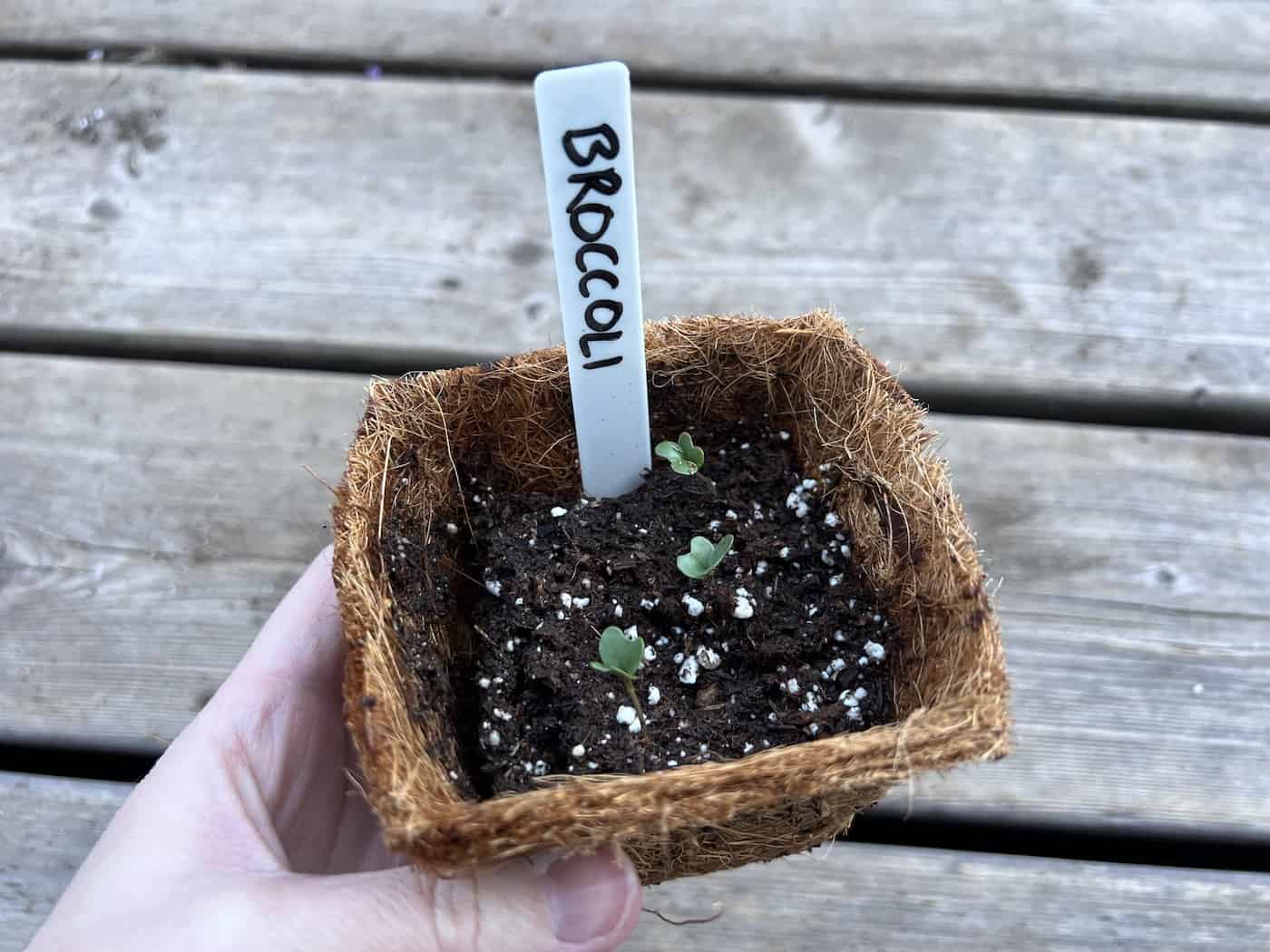
Care for broccoli seeds after planting
Once planted, proper care such as water, sunlight, nutrients, and temperature must be given to the broccoli seeds in order for them to grow into healthy plants. Proper care includes providing adequate water, sunlight, nutrients, and temperature.
Broccoli needs about 1-2 inches of water per week during its growing season. It’s best to water at ground level rather than from overhead so as not to get the foliage wet, as this can encourage fungal disease.
Broccoli prefers full sun but will tolerate some shade throughout the day if necessary. Aim for 6-8 hours of direct sunlight each day during its growing season. Fertilize your broccoli every 2-4 weeks with an all-purpose garden fertilizer according to package instructions. Provide the broccoli seeds with adequate moisture and sunlight in order for them to grow properly. Common problems when growing broccoli from seed can include pests or disease, inadequate soil nutrition levels, improper watering practices, and more; so it’s important to keep a close eye on your plants as they develop.
Common problems when growing broccoli from seed
When growing broccoli from seed, there are a few common problems to watch out for. The first is improper planting depth. If planted too deeply, seeds may not germinate or take longer than usual to do so. It’s important to make sure that the soil isn’t too compacted and that it has been watered before planting. Planting too shallow can also cause issues with germination if the seeds don’t stay moist.
The most common problem with growing broccoli seedlings is damping off. This refers to a fungal infection that completely kills the baby broccoli seedling when it is very young. Damping off usually takes the form of the stem thinning at the base of the plant, causing the seedling to topple over and die. In older seedlings, fungal infection can cause vascular wilt, in which the leaves start to yellow and dry out.
Combatting fungal disease starts with preparing a clean seed starting area. Bleach your seed starting supplies, use a fresh bag of seed starting mix, and buy seeds from a high-quality seed company. Keep the planted seed trays warm while the seeds germinate, but drop the temperature as soon as seedlings appear. The optimum growing temperature for maturing broccoli plants is 60-65°F (15-18°C). Keeping brassica seedlings at room temperature is a recipe for fungal infection to breed and spread.
Another issue when growing broccoli is poor drainage in the soil. Poor drainage can lead to root rot which will stunt growth and eventually kill off your plants if left unchecked. Make sure that your garden bed has good drainage by adding organic matter such as compost or peat moss into it before sowing seeds.
Pests are another problem when growing broccoli from seed, particularly aphids, and caterpillars which love munching on young plants. Regularly check your plants for signs of infestation and act quickly if you find any pests present – remove them manually or use an insecticidal soap spray as soon as possible before they spread further around your garden beds.
Finally, overwatering can be a problem when growing broccoli from seed – too much water can drown out small sprouts and prevent them from taking hold in the ground properly, leading to stunted growth or even death of young plants. Monitor the water you provide each day (a general guideline is about one inch a week) and stay away from giving too much in dry times; this should help keep those bothersome overwatering issues at bay.
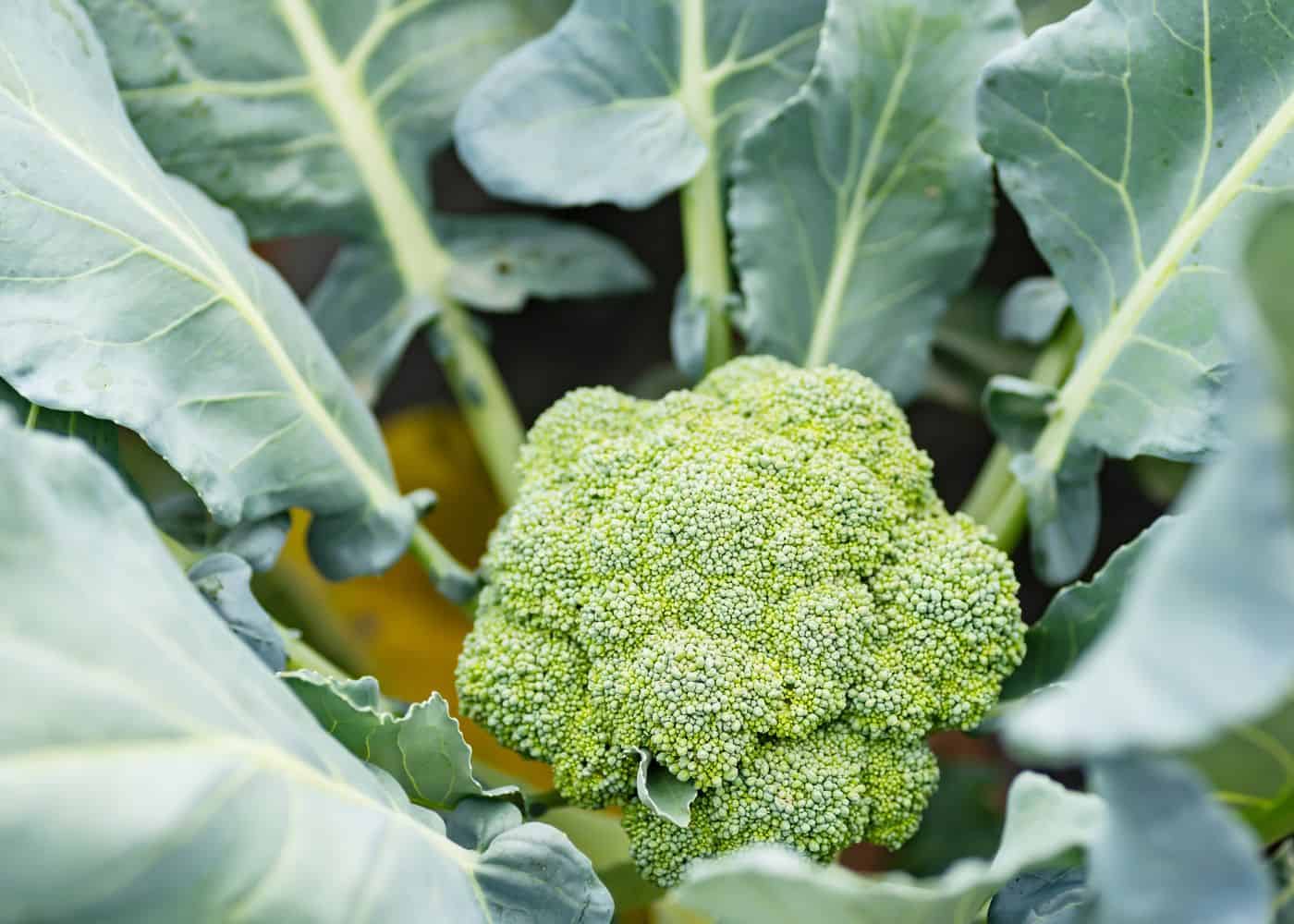
FAQs about how to plant broccoli seeds
Can you plant broccoli seeds straight into the ground?
Yes, you can plant broccoli seeds directly into the ground. However, for best results, it is recommended to start them indoors and then transplant them when the seedlings are 3-4 inches tall.
To maximize their potential, it is important to plant the broccoli with adequate spacing and protect them from cold weather or pests. Additionally, spacing out your plants properly while planting is essential in order to ensure they have enough room to grow and produce healthy heads of broccoli.
Should I soak broccoli seeds before planting?
You can, but it is not necessary. The seeds are small and difficult to manage in terms of soaking. If you like, ssoak your broccoli seeds in a bowl of warm water for 8-12 hours and discard any floating or damaged ones.


